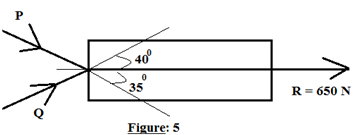Reference no: EM13824267
(1.) Briefly explain the term engineering mechanics and give complete classification of engineering mechanics.
(2.) Explain the following terms:- (i.) Statics (ii.) Dynamics (iii.) Kinematics (iv.) Kinetics (v.) Rigid Body and (vi.) Deformable body.
(3.) Explain the terms mass and weight and also differentiate between them.
(4.) State and prove parallelogram law of forces.
(5.) State and explain: - (i.) The Newton's laws of motion and gravitational law of attraction (ii.)The principle of transmissibility of Forces, (iii.) The law of super position and (iv.) The triangular law of forces.
(6.) Two forces are acting at a point ‘O' as shown in Fig. 1. Determine the magnitude and direction of the resultant by using parallelogram law of forces and triangle law of forces.
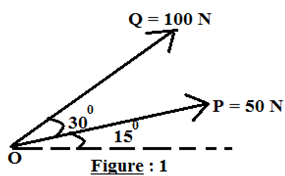
(7.) Two forces 260 N and 200 N act on a particle as shown in Fig. 2. Calculate the magnitude of resultant by using law of parallelogram of forces.
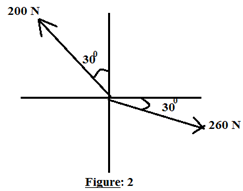
(8.) Two unequal forces inclined to one another at an angle of have a resultant of 86.6 N, which makes an angle of with one of the forces. Find the magnitude of two forces.
(9.) The resultant of two forces acting at an angle of is . If they act at right angle their resultant would be . Find the magnitude of the forces.
(10.) Two forces equal to 2F and F act on a particle. If the first is doubled and the second is increased by 15 N, the direction of resultant remains unaltered, find the value of F.
(11.) The magnitude of the forces acting on the bracket as shown in Fig. 3, are P = 200 N and Q = 150 N. The bracket will fail if the magnitude of the total force exceeds 300 N. determine the acceptable range of the angle
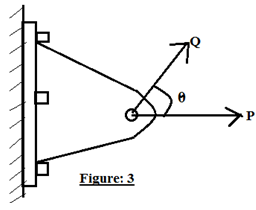
(12.) By using parallelogram and triangle law of forces, resolve the 100 N force acting at to horizontal into two components one along horizontal and other along to the horizontal.
(13.) Two forces 400 N and 300 N acts at a point as shown in Fig. 4. The resultant of the two forces is 600 N. Determine the angle between the forces and direction of the resultant.
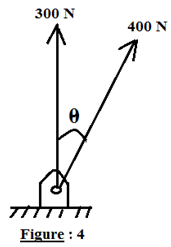
(14.) Two forces act at an angle of. The bigger force is of 40 N and the resultant is perpendicular to the smaller one. Find the smaller force.
(15.) Two forces P and Q act simultaneously on a rigid body and their resultant is 650 N as shown in Fig. 5. Determine the magnitude of forces P and Q.
